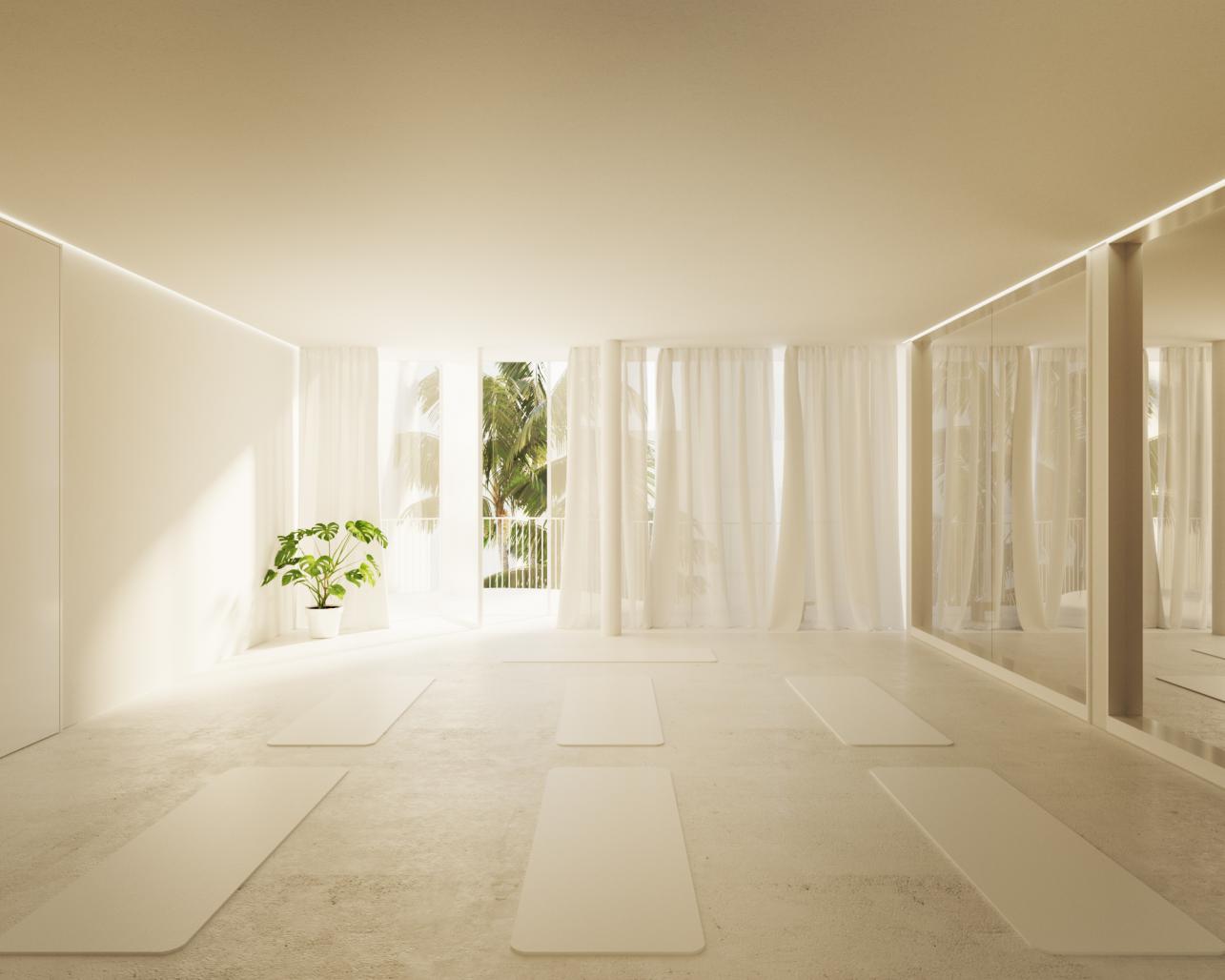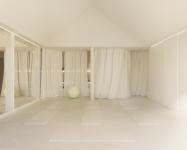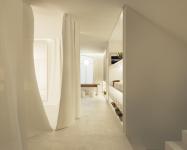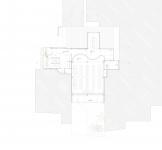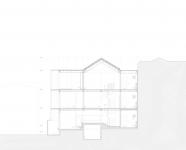The project consists of a new yoga studio located in District 1, Ho Chi Minh City, that was developed in two distinctive phases.
The first consisted of developing a concept without a site yet chosen. As requested by the clients, the only guidelines were an estimated floor area and the fact that it had to be on a rooftop.
The concept design was then formulated with these requests in mind and with a capacity to be easily adapted once the site was chosen. As such, the proposal resulted on a rectangular shape canopy "floating" on a generic rooftop of 30mx10m, with one the corners gently lifted, as if it was revealing the timber interior to this heavily concrete city.
Coincidently, with the global pandemic happening and daily life-changing to new customs, so was the project concept altered.
On this second phase, just before lockdowns, the site chosen by the clients was a three-floor shophouse - so commonly found in Vietnam cities - that required a total rethink of the strategy since no longer was a rooftop.
This particular building had a set back from the street which is rare and created a pleasant transition between the road and the building itself. In terms of architecture, it was noticeable that it suffered some mutations over the years but with some decorative elements and brown timber windows still present.
After observing these features, the first decision was to enhance and reveal the most characteristics of original elements but not excluding the possibility to add a new contemporary/historical layer in it.
It was quickly understood that the existing structure is quite delicate and that the architecture, with its very rigid concrete grid, had to be stripped from additions that were not considered valuable.
The new concept design responds with minimal interventions to the structure, opening the floor plans as much as the structure would allow and working with light, materials and colours to attain a unique atmosphere for the yoga practitioners to achieve a mindful and peaceful state of mind and internal silence.
This also gave the opportunity to the clients to expand the programmatic diversity of the project.
The ground floor was entirely dedicated to a healthy meal restaurant and the entrance hall to the yoga studio. Coming up the stairs the first floor is presented with a curved semi-transparent white velvet curtain that defines the circulation space and the flexible limits of the yoga room allowing both privacy and passage through the stairs; at one side the big existing timber windows offer sunlight to the reception area and at the other side, a small lightwell defines the entrance to the toilets and changing rooms.
A new terrace has been added to the front façade, echoing the interior curtains and allowing the yoga room to be extended the outside, as well as serving, has a canopy to the main entrance at ground floor. A small wellness area is located at the back of the building behind the main shelves containing sauna and massage / private yoga room.
The second floor begins just has the first floor with the same curved curtains, but the yoga room reveals a surprisingly high pitched ceiling, ideal for climate control in a tropical country.
The material palette has been thought to help in terms of use of space and help on focusing during the practice. Light-grey micro cement was selected for a flat continuous floor, chalky bone shade finish walls define the limits of the space and white lacquered shelves and wardrobes are a source of artificial light as well as storage facilities.
Upon completion, the project will represent a way to address the rapid transformation of the urban fabric of Ho Chi Minh City, balancing conservation with innovation, helping to consider the heritage for its possibilities and not as an obstacle to the high economical pressure that most South-east Asia cities are currently experiencing.
In collaboration with Jorge Soares Mendes & Gonçalo Duarte Pacheco
2019
2020
600 sqm
Leonardo Marchesi
Jorge Soares Mendes
Gonçalo Duarte Pacheco
